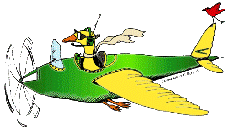Bird Strike Committee Proceedings
Date of this Version
October 2002
Document Type
Article
Abstract
Over the past 20 years, the Israeli Air Force (IAF) has focused attention in bird strike prevention on collisions between aircraft and migrating birds during low-level flight operations. Only in the last 2 years has the IAF begun to tackle the problem of reducing bird-aircraft collisions at or near airfields. A dramatic shift in thinking has led the IAF to initiate complete wildlife control programs at its airbases, featuring the employment of border collies and wildlife control officers to help eliminate the risk of wildlife collisions within the control zone (CTR) of each airfield. As a crucial component of this program, the IAF has initiated major changes in habitat management at airfields, eliminating agricultural initiatives and undergoing large-scale modifications in airfield maintenance practices. Additionally, the IAF has altered flight and ground operations where possible to attenuate the risk imposed by birds and has coordinated efforts within various departments at each airbase to address bird strike control issues. Awareness and the resolve to eliminate wildlife hazards at its airfields are key features to the IAF’s new directive on bird strike prevention. Though still in its infancy, the IAF’s new wildlife control program has already shown dramatic improvements in the reduction of bird strike hazards at airbases. In light of results achieved during this short time frame, it would indicate that use of border collies can be a highly effective mechanism for the IAF to combat bird strike problems. The most important result is obviously the bottom line – there have been no damaging bird strikes to aircraft since the commencement of the wildlife control program. Moreover, the threat of a serious bird strike has been greatly reduced by the elimination of larger birds from the airfields and a 3-km radius outside the airbases, as well as the overall reduction of major bird populations on the AOA.


